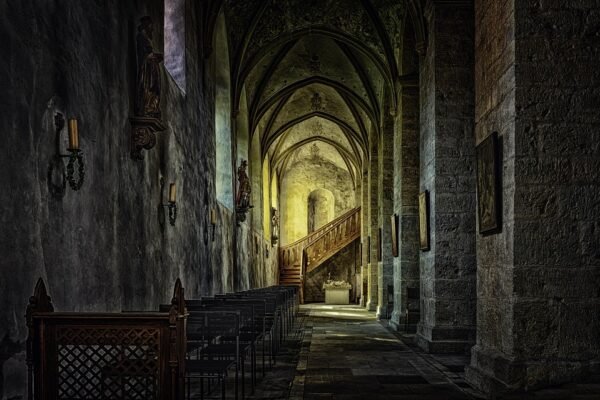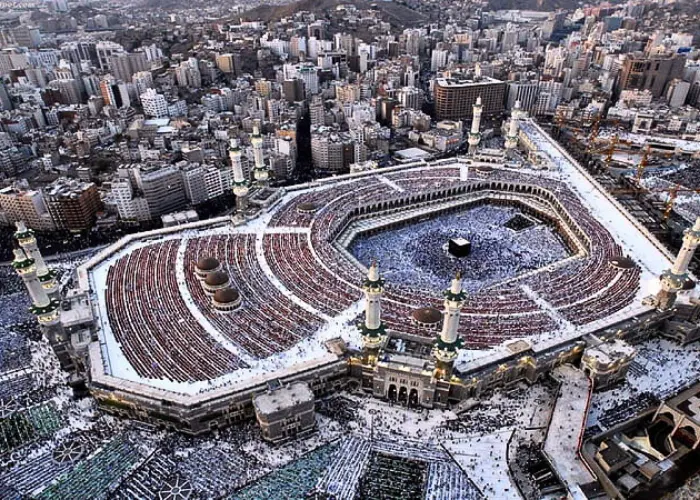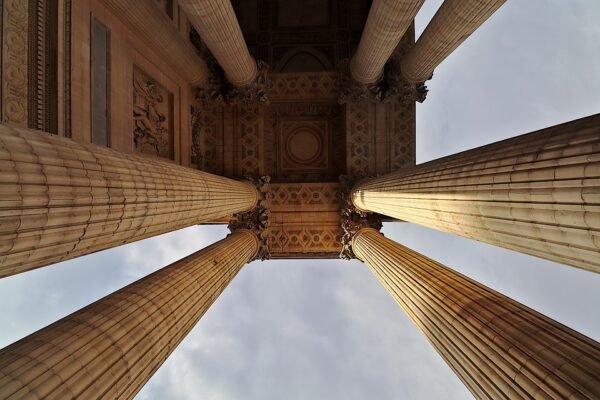

8 Masterpieces of Traditional Islamic Architecture – Stunning Art & designs – Retro Timeline
Islamic architecture is a captivating and intricate art form that has evolved over centuries, blending various cultural influences to create distinctive buildings. This style of architecture is renowned for its elaborate decorations, geometric patterns, and complex designs. Traditional Islamic architecture has played a significant role in shaping the history and culture of the Islamic world. In this article, we will explore eight masterpieces of architecture in Islam that represent the pinnacle of this art form, showcasing the beauty and complexity of Islamic architecture. Each of these buildings holds its own significance, serving as a testament to the skill and creativity of Islamic architects and influencing the cultural and religious identities of those who built them and those who continue to admire them today.
Whether you are a student of architecture, a history enthusiast, or simply someone who appreciates the beauty of art and design, these masterpieces of Islamic architecture are sure to inspire and captivate you. Let’s delve into the details of each masterpiece and uncover what makes them unique and essential in Islamic architecture.
The Great Mosque of Mecca, Saudi Arabia
The Great Mosque of Mecca, also known as the Masjid al-Haram, is one of the most sacred sites in Islam. Located in Mecca, Saudi Arabia, it serves as the holiest mosque in the world, attracting millions of Muslim pilgrims annually for the Hajj pilgrimage. The history of the Great Mosque dates back to the 7th century when Prophet Muhammad ordered the construction of the first mosque. Over the centuries, the mosque has been expanded and renovated multiple times, with each ruler leaving their mark on the building. Today, the mosque covers an area of approximately 88 acres and can accommodate up to 2 million worshippers at once.
One of the key architectural features of the Great Mosque is the Kaaba, a cube-shaped structure at the center of the mosque believed to have been built by Prophet Ibrahim and his son Prophet Ismail as a symbol of monotheism. The mosque also features several minarets, with the Bab-al-Umrah being the most famous for its intricate designs and beautiful calligraphy. Recent renovations and expansions, including the 2019 expansion project, have increased the mosque’s capacity and added new features to accommodate worshippers.
The Alhambra, Spain
The Alhambra Palace in Granada, Spain, is a stunning masterpiece of Islamic architecture built during the 14th century under the Nasrid dynasty. It is a prime example of the Mudéjar style, blending Islamic and Christian artistic traditions. Known for its intricate stucco work, carved wood panels, and beautiful gardens, the palace complex features the famous Court of Lions, a stunning courtyard with a central fountain and marble columns, and the Nasrid Palace adorned with mosaics and calligraphy.
Initially built as a fortress in the 9th century, the Alhambra was transformed into a palace by the Nasrid dynasty in the 14th century. Serving as a symbol of power and wealth, the palace influenced Spanish and Moorish architecture and continues to inspire architects and artists worldwide. The intricate designs and ornate decorations of the Alhambra reflect the creative spirit of Islamic architecture and its blend of artistic traditions.
The Hagia Sophia, Turkey
The Hagia Sophia in Istanbul, Turkey, is an iconic example of Islamic architecture with a rich history. Originally built as a Christian church in the 6th century, it later served as a mosque before becoming a museum in the 20th century. Commissioned by Emperor Justinian, the Hagia Sophia features a massive dome and stunning mosaics depicting scenes from Christian history.
In the 15th century, the Hagia Sophia was converted into a mosque by the Ottoman Empire, adding minarets and removing Christian artwork. The architectural marvel of the dome, supported by arches and piers, along with the intricate mosaics, highlights the creativity and skill of Byzantine artists. The Hagia Sophia remains a symbol of artistic and cultural exchange between different traditions.
The Sheikh Lotfollah Mosque, Iran
The Sheikh Lotfollah Mosque in Isfahan, Iran, is a breathtaking example of Islamic architecture built during the Safavid dynasty in the 17th century. Initially a private prayer hall for the royal family, the mosque features a stunning dome adorned with intricate tile work and beautiful calligraphy. The mosque’s exquisite designs and calligraphy reflect the creativity and faith of Islamic artists, inspiring visitors and artists worldwide.
Significant to Persian culture, the Sheikh Lotfollah Mosque continues to inspire architects and artists, showcasing the enduring legacy of Islamic architecture in Iran. Its intricate beauty and elegance are a testament to the cultural and historical richness of Persian architecture and the power of cultural exchange in shaping art and design.
The Qutub Minar, India
The Qutub Minar in Delhi, India, is a towering monument of Islamic architecture built in the 13th century under the Delhi Sultanate. Named after Qutb-ud-din Aibak, the first Muslim ruler of Delhi, the minaret stands over 240 feet tall and features intricate carvings and calligraphy. The nearby iron pillar, over 1,600 years old and rust-free, adds to the minaret’s historical significance.
The Qutub Minar’s influence on Islamic architecture in India reflects the country’s cultural diversity and richness. Its blend of Islamic and Indian styles demonstrates the power of cultural exchange and artistic collaboration across different traditions, shaping the architectural landscape of India.
The Blue Mosque, Turkey
The Blue Mosque, also known as the Sultan Ahmed Mosque, is a landmark of Islamic architecture in Istanbul, Turkey, built in the early 17th century. Commissioned by Sultan Ahmed I, the mosque features cascading domes, soaring minarets, and intricate blue tiles and decorations that give it its name. Designed by Sedefkar Mehmed Aga, the mosque draws inspiration from Islamic and Byzantine architectural traditions.
Beyond its architectural features, the Blue Mosque symbolizes the artistic and spiritual values of Islamic civilization. Its intricate decorations and calligraphy reflect the profound cultural and aesthetic values of Islamic art, showcasing the beauty of cultural exchange and artistic expression.
The Great Mosque of Djenné, Mali
The Great Mosque of Djenné in Mali is an iconic example of Islamic architecture in West Africa, built in the 13th century as a symbol of Islamic power and cultural richness. Constructed with adobe walls and wooden beams, the mosque’s unique design and striking appearance reflect the creativity and resilience of African builders and artisans. The mosque remains a symbol of African Islamic civilization’s enduring legacy and cultural exchange.
Each of these masterpieces of Islamic architecture represents a unique blend of cultural influences, artistic traditions, and religious significance. They stand as testaments to the creativity and skill of Islamic architects and continue to inspire generations of artists and architects worldwide. The enduring legacy of Islamic architecture is evident in these masterpieces, showcasing the beauty and complexity of this art form across different regions and cultures.







